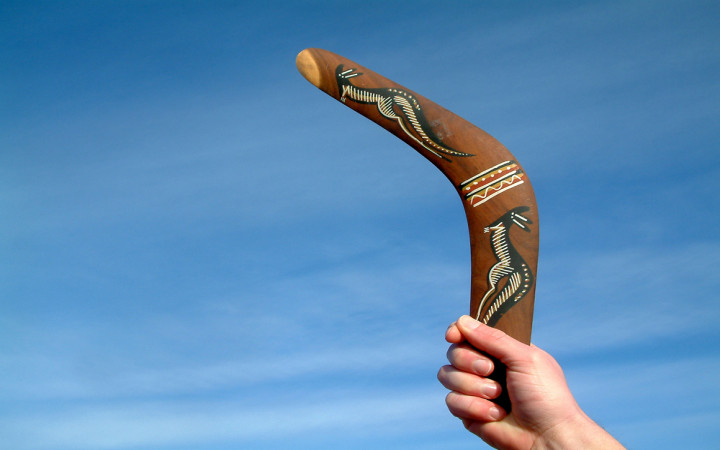Today’s Wonder of the Day was inspired by Chelsea from Sanford, NC. Chelsea Wonders, “Why does a boomerang come back?” Thanks for WONDERing with us, Chelsea!
Most kids have seen boomerangs thrown into the sky only to return right back to the person who threw it. In fact, for most of us, that is the essence of the boomerang: it comes back to you.
Believe it or not, though, not all boomerangs come back. So what do you call a boomerang that doesn't come back? A stick! OK, that may be an old joke, but there's certainly some truth to it.
Not all boomerangs are designed to come back. Boomerangs were first invented thousands of years ago as weapons. As throwing sticks, they were designed to use to hunt animals for food. They were meant to bring down game, not to fly through the air and return to the thrower. The oldest Australian boomerangs used by native peoples are over 10,000 years old.
Returning boomerangs developed from throwing sticks used for hunting. Like the Frisbee, their main purpose has always been mainly for sport or leisure — just the sheer pleasure of throwing the boomerang the right way so that it returns to the thrower.
However, returning boomerangs can be used for hunting, too. For example, a returning boomerang can be used as a bird decoy. Thrown over areas of long grass where game birds nest, returning boomerangs can frighten these birds into taking flight, thus making them easier to hunt.
Returning boomerangs have a special curved shape and two or more wings that will spin to create unbalanced aerodynamic forces. These forces — sometimes called “lift" — cause the boomerang's path to curve in an elliptical shape, so that it will return to the thrower when thrown correctly.
Boomerangs have often been made of wood. There is evidence, though, that the first boomerangs may have been made of bone. Today, boomerangs can be made from a wide variety of materials, including wood, plastic and space-age composite materials.
Most modern boomerangs are returning boomerangs. They come in all sorts of shapes and sizes. Most of them are used for sport. There are many boomerang competitions around the world every year.
Throwers compete in all sorts of skill areas, such as farthest throw, accuracy of return and longest time aloft. David Schummy of Australia holds the Guinness World Record for longest boomerang throw at an incredible 1,401.5 feet!




